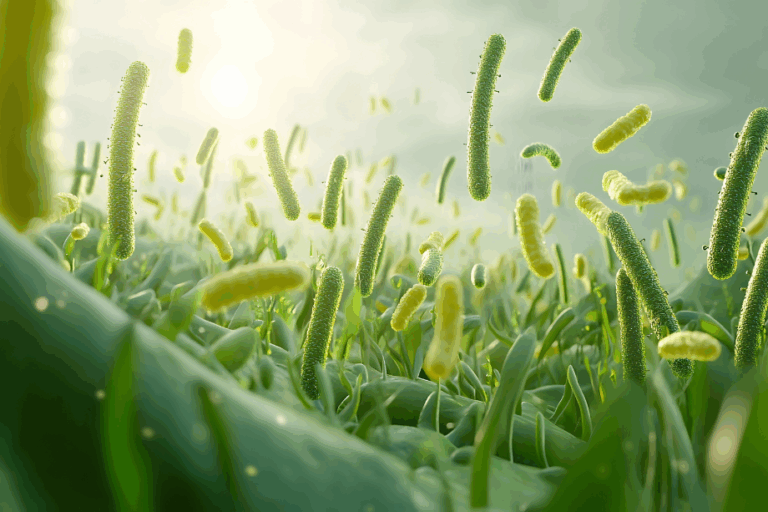Overview
Acne is the most common skin condition in the US, affecting approximately 50 million Americans each year. According to the American Academy of Dermatology (AAD), 85% of those between the ages of 12 and 24 experience minor to severe acne. The condition can extend into one’s thirties and forties, and studies show that acne in adults is on the rise, affecting 15% of adult women.
We go through life thinking that acne is a normal human occurrence – a rite of passage as one transitions from childhood into adulthood. Yet, in less developed parts of the world, acne is virtually non-existent. Why is this? Why is acne such a common condition among Americans and essentially unseen in more indigenous cultures?
There is one main difference between them and us. Societies living in rural environments are intimately connected with the earth and eat a traditional, microbiome-friendly diet, rich in plant fiber with little or no processed foods or sugar. Because food and our surrounding environment have such an impact on our microbial health, it’s hypothesized that acne is a result of the microbial alterations brought on by our modern world – from the food we eat, to the medicine we take, to the lifestyle choices we make – it all affects our gut, and in turn, our skin.
The diet-acne connection
While the AAD states, “Given the current data, no specific dietary recommendations are recommended for the management of acne,” there is growing research showing a connection between food consumption and acne. Emerging scientific evidence suggests that foods that spike blood sugar as well as certain dairy products may increase the manifestations of acne.
Two randomized controlled trials (the gold standard for testing disease treatments) looked at the effects of a low glycemic load (LGL) diet on acne. The first included 23 males between the ages of 15 and 25. Those following the LGL diet experienced significant improvement in acne severity. The second study consisted of 32 male and female participants aged 20 to 27 and found that those on the LGL diet experienced significant improvements in acne severity, as well as reduced size of sebaceous glands and a decrease in inflammatory cells and cytokines (all markers for acne). While these two studies are limited by the small sample size, they illustrate that a diet high in fiber (which helps neutralize blood sugar levels) can positively impact acne severity. Four other studies, while less rigorous, show the same association.
The effect of dairy consumption on acne has not been tested in a randomized controlled trial, yet observational studies show that consuming dairy, especially skim milk and ice cream, may increase manifestations of acne. In one study, 47,355 adult women were asked to recall their diets during high school as well as whether or not they received a diagnosis of acne. Results showed that acne was associated with milk consumption, and most strongly with skim milk; those who drank 2 glasses or more of skim milk were 44% more likely to report an acne diagnosis. The same researchers then followed a cohort of girls and boys and found similar results. In the girls, acne was associated with all types of milk consumption (whole, low-fat, and skim), while the boy group showed an association with acne and skim milk only. Another study conducted in Malaysia found that those who consumed milk or ice cream once or more per week were 4 times more likely to have acne. Scientists hypothesize that the relationship between milk consumption and acne could be due to milk containing IGF-1, a growth hormone that can lead to inflammation, which is often a precursor to acne breakouts. An association between acne and yogurt and cheese consumption was not found in any of these studies.
Other dietary studies regarding food and its effects on acne exist, but they are few in number and no definitive conclusions can be made because of their limited nature. One review study looked at the effects of edible plants (used in Ayurveda and Chinese medicine) to treat acne, mediated through microbial changes. These plants included various Ayurvedic plant extracts, berberine, berry extract, garcinia, green tea extract, gugulipid, turmeric, sunder vati, and vitex. While some showed positive effects in reducing inflammation, dysbiosis, and acne lesions, the scientific support is too minimal for Gutbliss to recommend these products as verified treatments for acne. Other studies have investigated the effects of antioxidants (including zinc), fish oil, and probiotic supplements on acne, but again, the evidence is scattered and strong support is lacking.
The gut-acne connection
While the connection between diet and acne is cloudy, strong evidence exists supporting the connection between gut health and acne in the scientific literature, dating back to as early as the 1930s. One study showed that 54% of acne sufferers have significant alterations in gut flora. And these microbial differences are predictable; those with acne have a significantly lower count of Bifidobacterium. Hypochlorhydria (a condition where the production of acid in the stomach and other digestive organs is absent or low), leaky gut, and dysbiosis (imbalanced gut bacteria) have been implicated as playing key roles in acne (ADD CITATION). While scientists are still grappling with exactly how these conditions affect our skin, it’s hypothesized that they trigger inflammation in the body, causing a physiological cascade that leads to acne. Scientists have also found that those with gut conditions, including chronic bloating, inflammatory bowel disease (IBD), irritable bowel syndrome (IBS), celiac disease, and small intestinal bacterial overgrowth (SIBO), are significantly more likely to have acne than those who don’t have these conditions.
Dietary recommendations for acne
As mentioned above, the AAD does not recommend any dietary interventions for acne. While this may be prudent based on the paucity of interventional treatment studies, we know that the association between gut health and acne is strong – even if we can’t yet fully explain how this connection works. We also know that the best way to improve gut (and microbial) health is through the food we eat. Therefore, at Gutbliss we highly recommend taking a close look at your diet – and other lifestyle practices – when trying to improve your acne.
Where acne is concerned, we often spend lots of time and money taking care of our outermost skin layer – the face – and neglect the skin’s innermost layer – the intestines. Think of your intestines as the innermost layer of your skin. Clear skin begins from the inside out, and if you suffer with acne, focusing on your intestinal health can do wonders to improve your condition.
So what specifically can you do if you have acne and want to address it with food? Avoiding dairy, especially milk and ice cream, and eating a plant-based, high fiber diet can be a great place to start, based on the current research. In addition, focusing on foods that promote anti-inflammatory mechanisms in the body and avoiding foods that trigger inflammation can be important since acne is often rooted in inflammation. For specific recommended foods, check out The Gut-Beauty Connection.
Keep in mind though that treating acne by improving your gut health and balancing your microbiome is not a quick fix for everyone. While visible improvements in skin lesions may be visible early on for some, it can take months for others to see meaningful results. But a daily commitment to taking care of your gut health (and in turn, your skin health) always pays off in the long-term.
For a step-by-step guide on how to improve your microbial health through lifestyle and dietary changes, check out Dr. Chutkan’s book, The Microbiome Solution.







